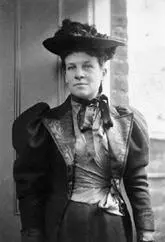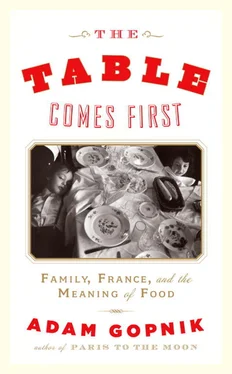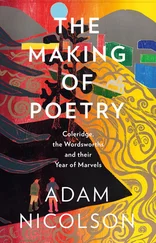Yet beneath the neatly ordered and bureaucratized recipe regimens, the rumble of real life, and of women’s lives, could still just be heard. As it grows, the recipe book is always reaching back toward the hearth, toward telling a story; then it bends again toward being usefully businesslike. Cookbook manuscripts appear throughout the nineteenth century, just as family cookbooks exist to this day. (My mother’s Your Favorite Dishes and Then Some , distributed to her children, contained all those brownie, Danish, and apple pie recipes I tried to make, mostly in vain, as well as anecdotes, tales, advice, the voice of lived experience.) Despite the cleaning and pressing undertaken to turn talk into type for America’s first cookbooks, the real sounds of real women, who talked, cooked, read, and made love as parts of one whole and sensual being, could not help being heard.
The most original, and until our own day probably the best of all these attempts to blend the narrative and the instructive, was the work of the now-forgotten English writer Elizabeth Pennell, whose revival we owe to the historian Talia Schaffer. Pennell was the first to see the cookbook as a literary form—a thing worth saving and collecting, analyzing and writing for its own sweet or savory sake. Pennell was one of those rare astonishments, a person genuinely “out of time.” She would have been right at home in the 1980s, far more than she was in the 1890s: the Nigella Lawson of the Age of Whistler, or the Padma Lakshmi of Oscar Wilde’s set. She was many things—an English aesthete, who wrote for The Atlantic Monthly , and one of the first feminists who was not a bluestocking. “Gluttony is ranked among the deadly sins; it should be honored among the cardinal virtues” is the arresting first line of her 1896 Diary of a Greedy Woman . Her portraits show her as handsome, as the time would have had it, rather than really pretty—a slight offprint of the Getty Girl type. She affirms women as gluttons, creatures of the flesh; and the erotic—indeed, oral-erotic—content of her book is so evident as almost to embarrass the modern reader. “Accept the gospel of good living and the sexual problem will be solved,” she says, in one of the bluntest and most magical sentences of the late nineteenth century. Her self-declaration as a “Greedy Woman”—not a dainty epicurean damsel, not a loving wife and mother providing for her wee mouths, but a woman with an appetite on her and a hunger in her—is one of the most charming, and yet truly “radical,” self-fashionings of the era.

Yet her diary is a cookbook—of a kind that wouldn’t reappear until our own time, a first-person account of how to eat by cooking things. She recommends wine for breakfast—she is a partisan of Graves particularly, finding Pinot Noir too heavy, a judgment leading one to think that the clarets of our great-great-grandfathers’ days were much less fruit-forward than the ones we know—to be followed by Cognac but no sweet. She calls the British sandwich “grim and gruesome” (which, until around 1980, it invariably was). Her ideal dinner is eerily contemporary, very much like one at Chez Panisse: a filet of beef with mushrooms but only market-fresh ones, pommes soufflées , no dessert, but a Port Salut cheese, and a single tangerine, the whole thing washed down with a good bottle of Burgundy.
Yet all of this is couched not, as a man’s writing might be, as detached “Epicurean” revelry but, as even an aesthetic woman’s must be, as spurs to shopping and cooking. Her greed is productive. Her recipes are makeable, but they are also offered as prose poems (even those of us allergic to the prose poem can like these)—for example, on turbot au gratin:
In Turbot gratin, the ecstatic possibilities are by no means limited. In a chaste silver dish, make a pretty wall of potatoes, which have been beaten to flour, enlivened with pepper and salt, enriched with butter and cream—cream thick and fresh and adorable—seasoned with Parmesan cheese and left on the stove for ten minutes, no more nor less; then let the wall enclose pieces of turbot, already cooked and in pieces, of melted butter and of cream, with a fair covering of breadcrumbs; and rely upon a quick [i.e., broiler hot] oven to complete the masterpiece.
Elizabeth Pennell had extremely, almost scarily, good taste: she loved Burgundy, Cognac, strong coffee; she wanted simple food that wasn’t too simple—roasted spring chicken, a ragout of mushrooms—and subscribed to the enduring truth that “the secret of good cooking lies in the discreet and sympathetic treatment of the onion.” “And after,” she adds, “if you still hanker for the roast beef of old England, then go and gorge yourself at the nearest restaurant.” She wants you to accompany this with a good Beaune, and then with coffee, “a mix of Mocha and Mysore.” “Forgo feminine liqueurs, but rely on cognac,” the “immortal liquid,” and then “lean back and smoke in silence, unless speech, exchanged with the one kind spirit, may be golden and perfect as the dinner.”
The Pennells must have had a very good sex life.
Elizabeth Pennell was brave and eerily modern. She recommended salad as a meal, while deploring the “salad cream” that was still an alarming feature of British meals just a generation ago. She loved Italian food, long before her postwar heir Elizabeth David, and put it on the same level as the French. Pasta she especially adored—she calls it, generically, “macaroni,” and introduces her readers to the delights of spaghetti, the “smaller daintier variety” of macaroni—in exactly the tones that a contemporary writer would introduce them to traghetti or chitarra or some other obscure and newly trendy noodle. (She has the sense to insist that the best way to eat it is cooked al dente and served with grated Parmesan and butter.)
I feel about Pennell as A. J. Liebling felt about Pierce Egan, his favorite chronicler of early-nineteenth-century prizefighting: that here at last is a friend at court, a source of wisdom, an ally. One of the hard-to-tell truths about even the best food writing before our time is that we often have to learn to read past the food, which we don’t quite “get,” on our way to the hunger, which we do. Almost all descriptions of dinners past reveal something weird and Martian in the choices—you bounce along happily enough with Brillat-Savarin or even La Reynière eating truffled turkey, and then suddenly you have long inscrutable stretches of boiled lamb and larks on brochettes and sweet Sauternes served with boiled salmon in anchovy cream. But there is nothing on Pennell’s menus that is not delicious, like the menus themselves. Where, reading old recipe books, you usually say, “Huh?” as often as “Ummm,” with Pennell it’s all just right. Her ideal dinner is indeed ideal: onion soup soubise (with cream), tournedos with wild mushrooms, and a winter root salad—carrots and cauliflower with a vinaigrette—followed by a single ripe tangerine, all served with a good Beaune, very strong coffee (that preferred Mocha and Mysore blend), and a glass of Chartreuse after.
Reading Pennell’s recipes makes you think of what you’d want your last meal to be. Mine is probably roast chicken with lemon, cubed potatoes, cooked with a white wine reduction of the jus from the chicken—this poses a danger since the cubed potatoes will absorb the juices, so I might do a gratin instead—and then mustard cream sauce, broccoli purée with crème fraîche, carrot circles with cumin and orange. An apricot soufflé for dessert, and for wine a rosé champagne to start, then a great Burgundy—a Vosne-Romanée or a Vougeot or Volnay—concluding with a glass of Calvados. Alternative menu: Filet of beef with béarnaise sauce and plenty of shallots and wild mushrooms; pommes soufflées; green beans with more shallots; and a tarte tatin and a glass of Calvados to end. Chocolate pot-au-crème for dessert. A stronger wine to drink, like a California Syrah. Or, not to be too finicky: a well-brined pork chop—you can keep the filet, which is too vapid—with gray shallots and white wine mustard sauce, and roasted carrots and brussels sprouts with balsamic vinegar and bacon, and a tarte tatin with (again) a glass of Calvados for dessert (some things are not negotiable). But as I order these perfect suppers, I remember that the best meal our family ever shared was in fact a milk-fed leg of lamb, a gigot, from the Pyrenees, with a Beaune wine, and a purée of potatoes and green beans, I think; the sauce was a magical, improvised combination of a garlic cream and the white wine reduction from the lamb drippings that I’ve never quite been able to re-create. (And what was dessert that night? I think we had French strawberries, and then took the children out for ice cream.)
Читать дальше













